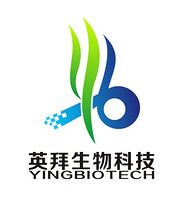乳腺癌基因突變芯片 Breast Cancer Mutation PCR Array

運費 ¥0.00
| 地區(qū): | 上海 |
| 簡介: | Breast Cancer Mutation PCR Array |
| 提供商: | SAB |
| 服務名稱: | Breast Cancer Mutation PCR Array |
The mutation assay detects the best known AKT1 mutation, c.49G>A, p.E17K. This is a PH domain mutation that results in constitutive targeting of AKT1 to plasma membrane. APC: 1 Assay The most commonly detected APC inactivation mutations are mainly composed of truncation mutations (due to nonsense mutations and frameshift mutations) and point mutations between codons 1250 and 1578. BRAF: 2 Assays There are two major classes of BRAF mutations. One class leads to increased BRAF kinase activity, such as the p. V600E mutation. The other class leads to impaired kinase activity, such as the p.G469A mutation. CDH1: 3 Assays The top CDH1 mutations either are missense mutations or frameshift mutations that lead to C-terminal truncation and secreted E-cadherin fragments. CTNNB1: 1 Assay The most frequently detected CTNNB1/beta-catenin mutations result in abnormal signaling in the WNT signaling pathway. The mutated codons are mainly several serine/threonine residues targeted for phosphorylation by GSK-3beta. HRAS: 1 Assay The most important HRAS mutations identified in cancers occur at codons 12 KRAS: 5 Assays The mutation assays include the most frequently occurring mutations in KRAS codons 12, 13, and 61. Mutations at these positions result in reduced intrinsic GTPase activity and/or cause KRAS to become unresponsive to RasGAP. NRAS: 1 Assay The most important NRAS mutation in breast cancer occurs at codon 61. PIK3CA: 13 Assays The most frequently occurring PIK3CA mutations mainly belong to two classes: gain-of-function kinase domain activating mutations and helical domain mutations that mimic activation by growth factors. TP53: 56 Assays The most frequently detected somatic mutations in TP53 are largely composed of DNA-binding domain mutations which disrupt either DNA binding or protein structure |








